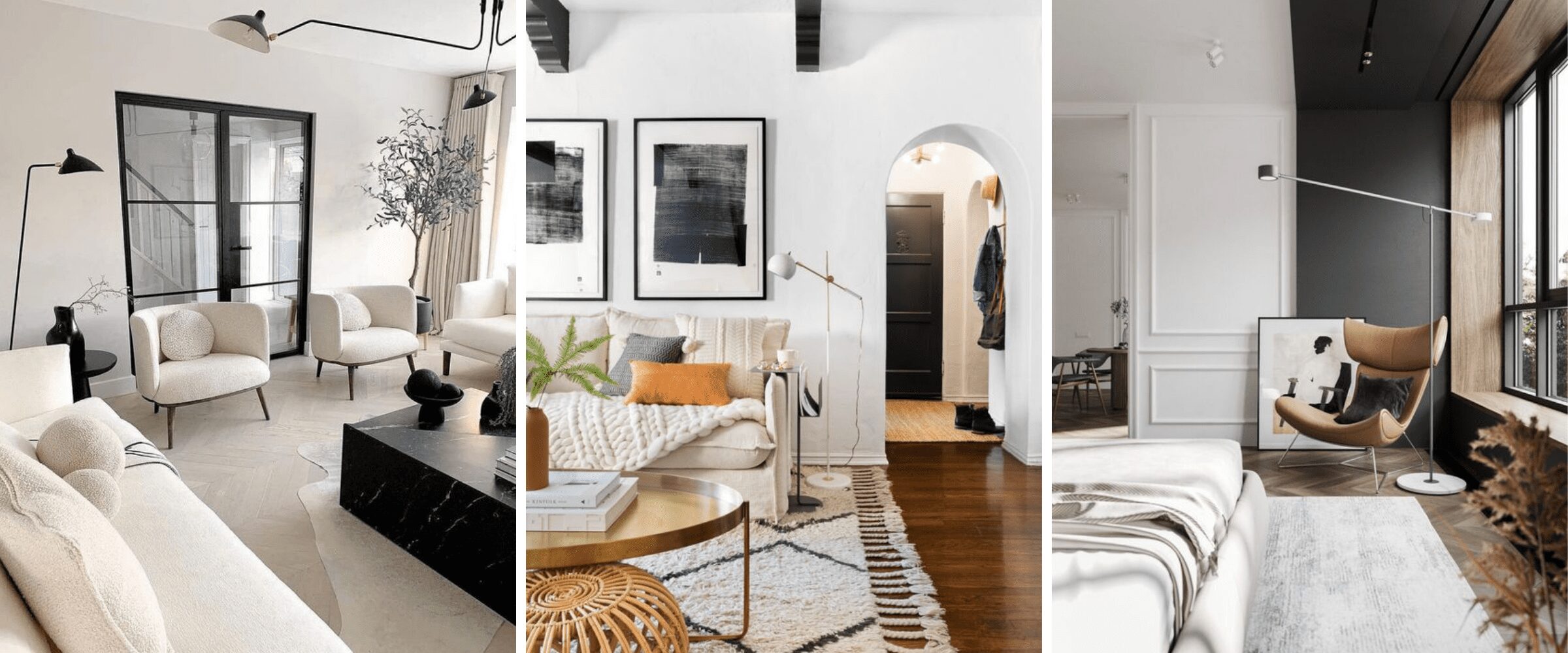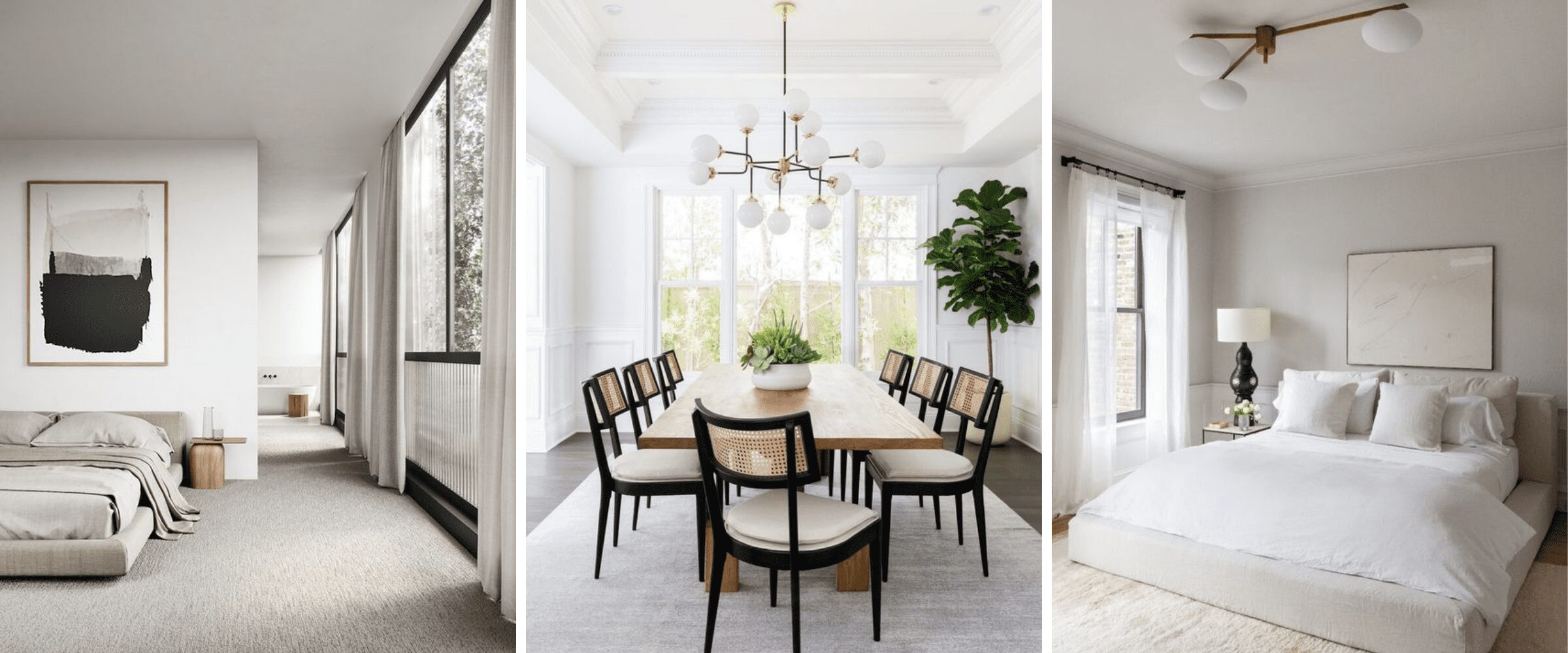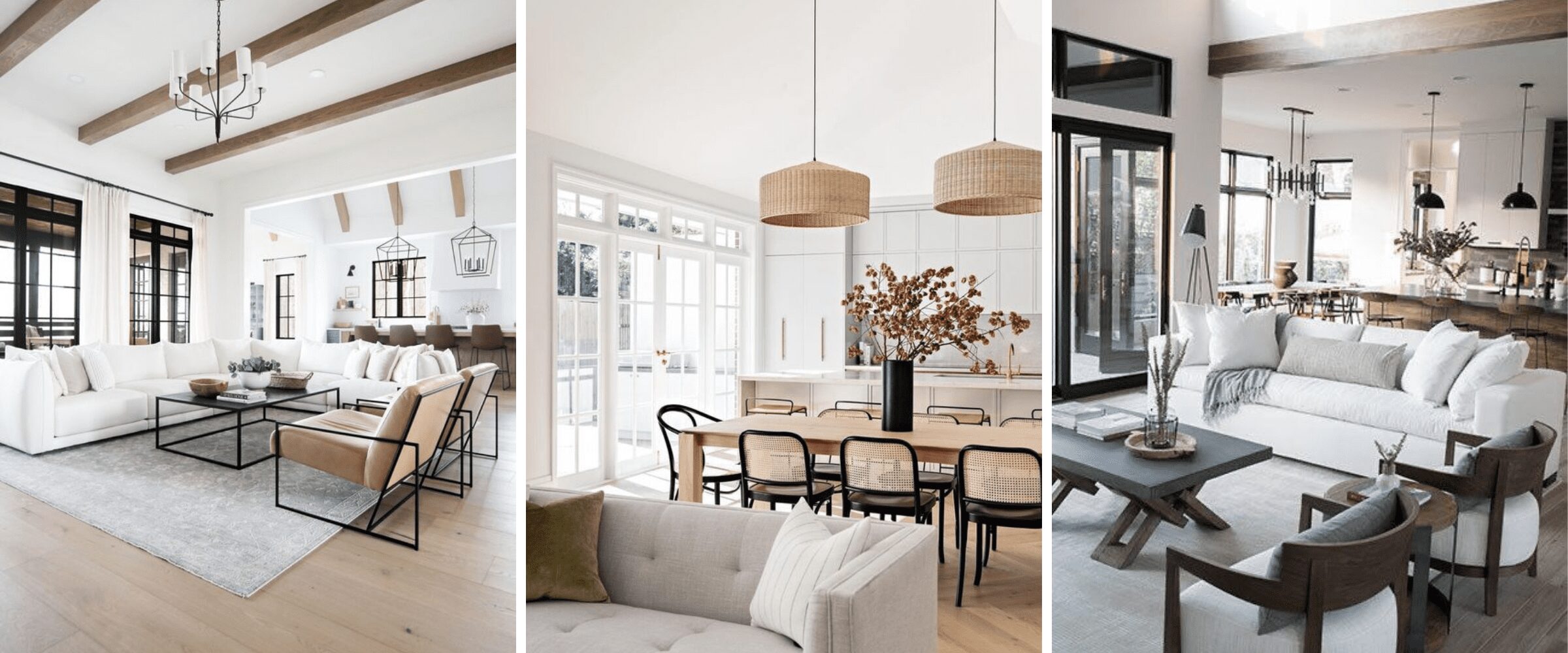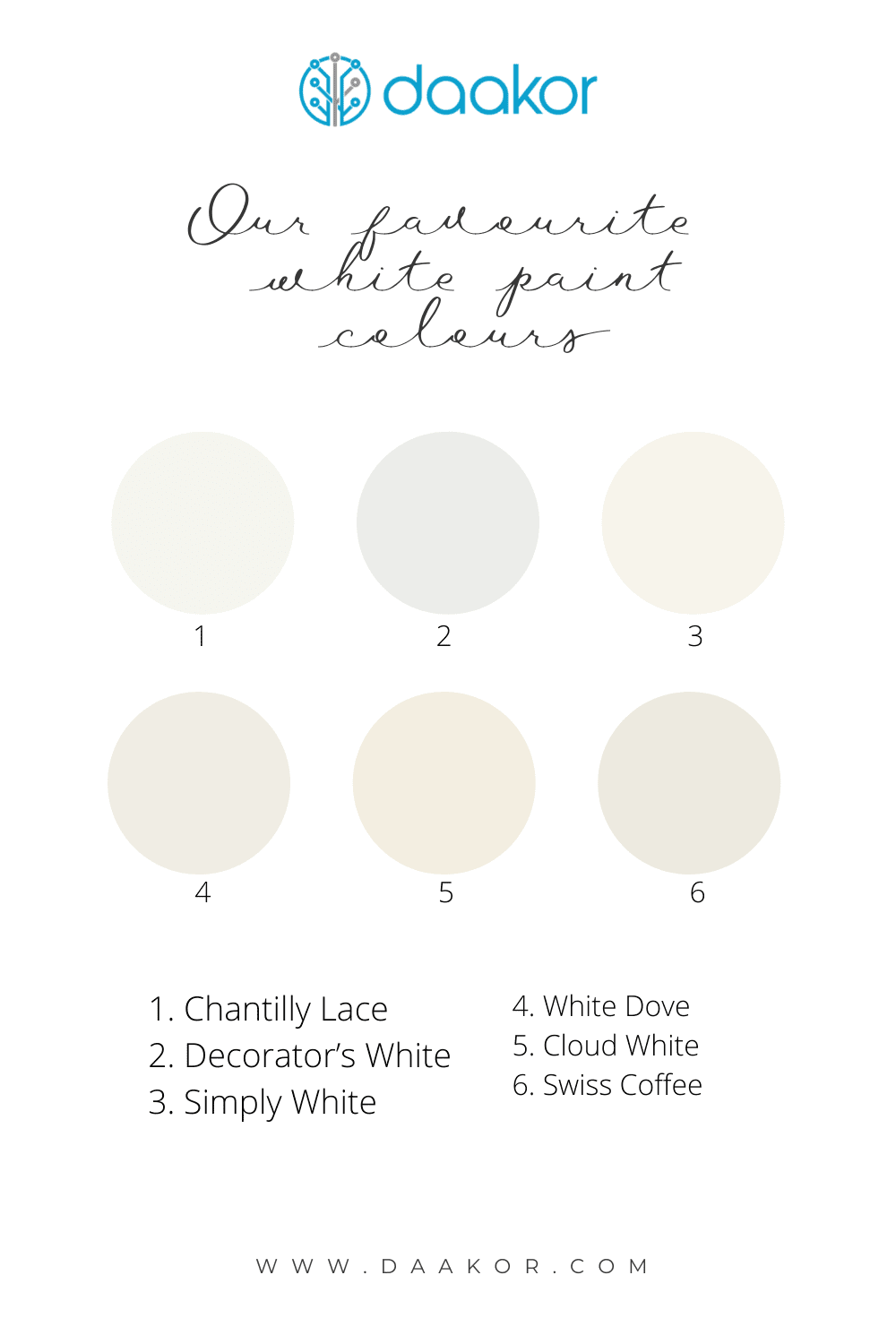I’m the biggest sucker for colour in a room and wall paint is no different. But I’ll admit, white walls are having a big moment in design these days. But choosing a white paint colour can be tricky.
Have you ever stood across from the paint chip section at Home Depot or at your local Benjamin Moore store, scratching your head, looking through all the various shades of white? I mean, who knew there were so many shades of white?
Didn’t it kinda blow your mind when you put two of those seemingly the same at first glance white paint chips next to each other and you started to see the undertones coming through?
Today, we are going to demystify how to choose the right shade of white paint for your walls. Our easy 3 step process will do exactly that and we’ll also share six of our favourite white paint colours with you.

Via Pinterest.
Step1: Understand the undertones.
Undertones exist in most colours. They exist because most colours are created by combining two or more primary colours.
The more dominant colour, the one that you see, is called the overtone or the masstone. And the one that you can’t see, you guessed it, is called the undertone.
The only colours with no undertones are a true white and true primary colours like blue, red and yellow. When you compare any colour to the true masstone of that colour, you’ll see the undertone easily.
White paint colours fall into 3 categories based on their undertone.
Cooler whites are the ones that have bluish undertones. In contrast, warmer whites have yellowish undertones. The third category is neutral whites and they have no undertone.
TIP: Easiest way to find the undertone of the white paint chips you might have is to compare it to a piece of white printing paper.

Via Pinterest.
Step 2: Take Stock of Your Room
Next step is to take a good look at your room. Are your floors and wood tones in your furniture, etc. and assess them as warmer or cooler. You’ll find the guide below helpful for this task.
What about other colours you might have in the room? For example, if you’re looking to paint a living room, is your sofa upholstery colour cool or warm?
You’ll want to do this for everything in your room. Your goal is to assess if the your room is cooler or warmer in general.
If you’re starting from scratch, ask yourself how you want the room to feel once it’s fully furnished and decorated. Would you want the room to feel cool or warm?
In general, most homeowners want a warm vibe in thier home. That doesn’t mean it doesn’t make sense to have room that has cooler colours. I find the rooms that have more cooler colours tend to feel calmer. More zen like, if you will.
If your room is more on the cooler side or you want it to feel cooler, then you’ll want to choose a white that is cooler. Conversely, if your room is on the warmer side, go for a warmer white. These options work when you want to stay consistent with what you already have.
But let’s say you have a warmer room and you want it to be less so. What do you do then? Choose a neutral white. Same goes for a room that you want to be less cooler.
And what if your furniture is neutral? Then what? Then, our advise is to choose a warmer white.
We also primarily choose warmer whites for bedrooms because we want it to feel cozy. It’s also important to note that often you can choose a neutral white and warm up the space by the furniture choices you make.

Via Pinterest.
Step 3: Checkout Your Lighting
How you perceive colour has a lot to do with the light in the room.
Did you know the light in one city is different from the light in another city? Mind blowing, right? Not that this matters much because I assume you’re not going to decide on a colour for a house far away from where you live! But in the off chance you are, make sure you test your paint options on the actual walls they will be going on.
Colours can be rendered differently based on the type of light. For example, a colour is going to look different in natural light compared to under a source of artificial light.
Finding the Right White Paint
So, how do you find the perfect white paint colour for your home? Choose a few colours based on the first two steps above and then test them in your home to see how they look with different lighting in your home.
If you watch those HGTV shows, you’re familiar with the hosts trying out colours in the actual walls the paint will go on. Now you know why they do this. Even the pros still do this. That means you should too.
At Daakor, we often incorporate paint colours in our style boards but we always recommend that our clients try the colours out in their home first as the lighting in the room may render the colour differently in real life.
Be sure to make note of the colours you’re testing in natural light and in artificial light sources. Consider how they look during the day and in the evening.
And finally, if you’re still unsure of which white paint to test, here are our favourite white tones by Benjamin Moore you can try.
If you’re taking on a DIY painting project, we have some great tips for a successful DIY paint job, you should check out here.




